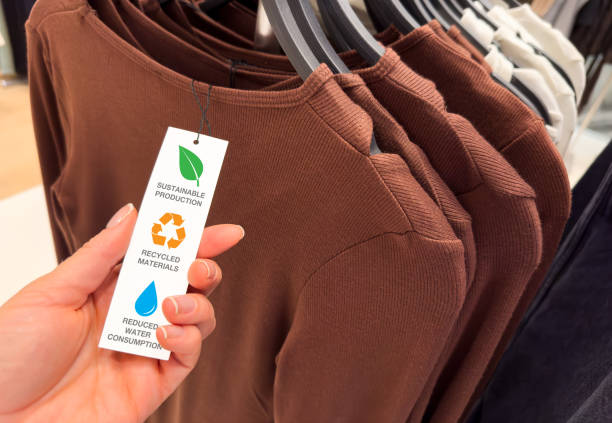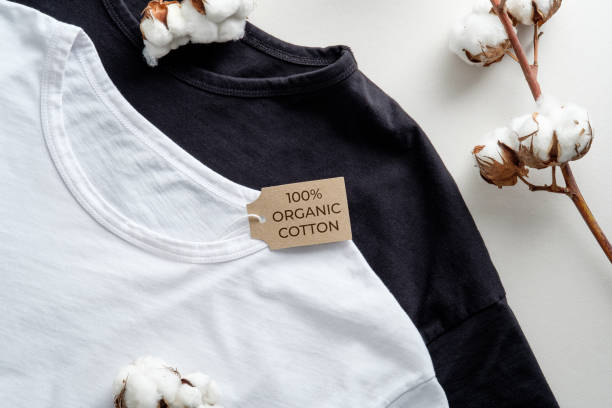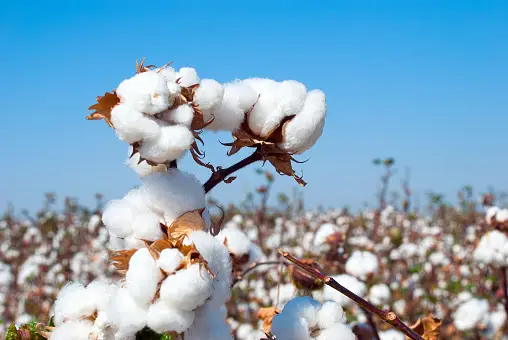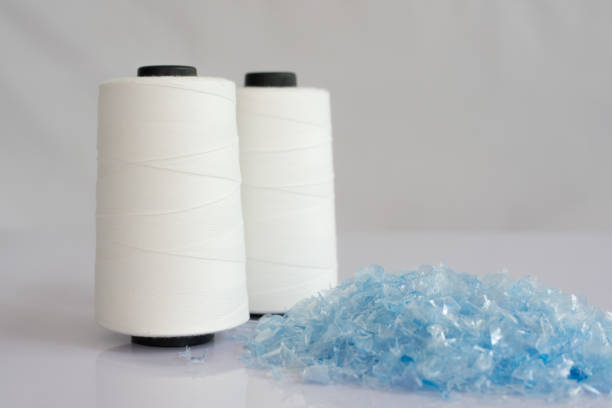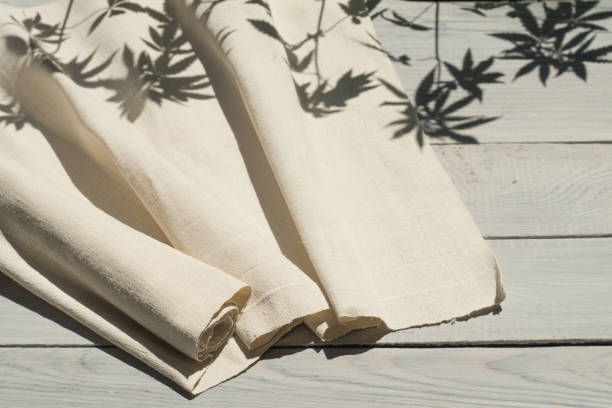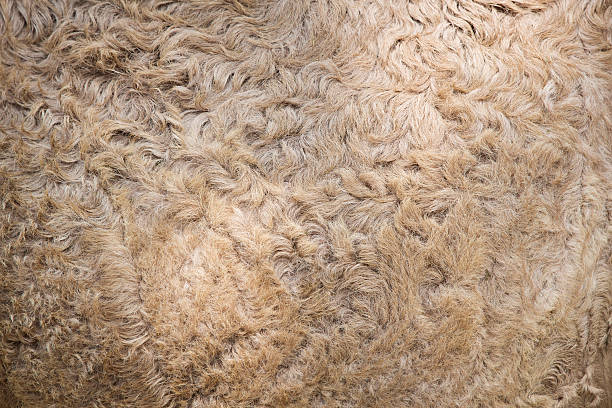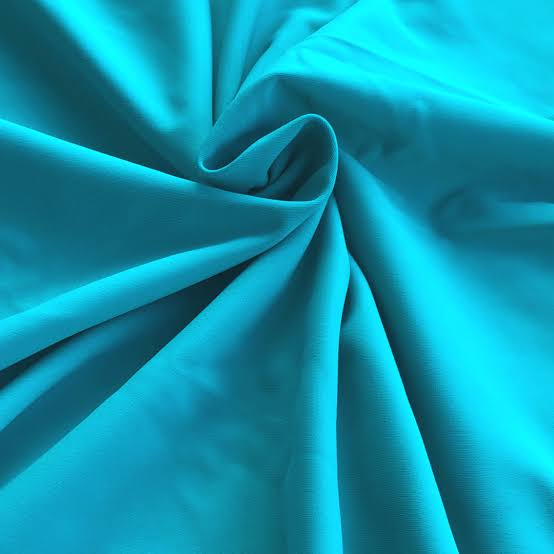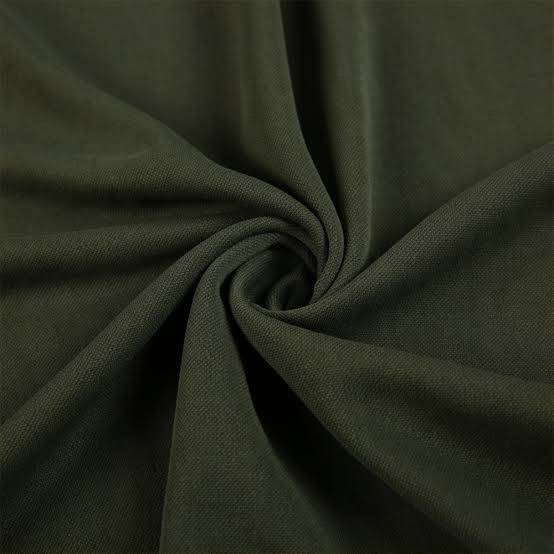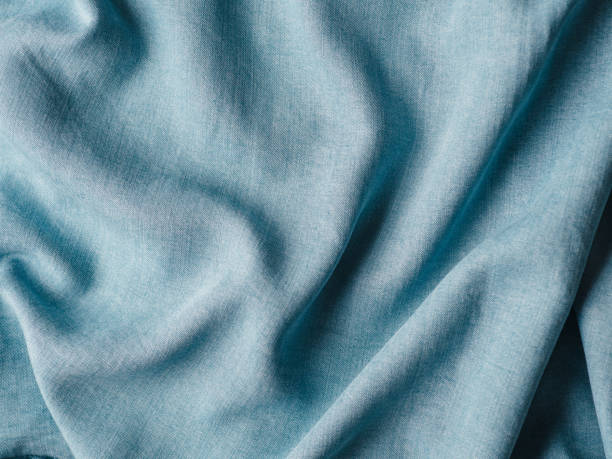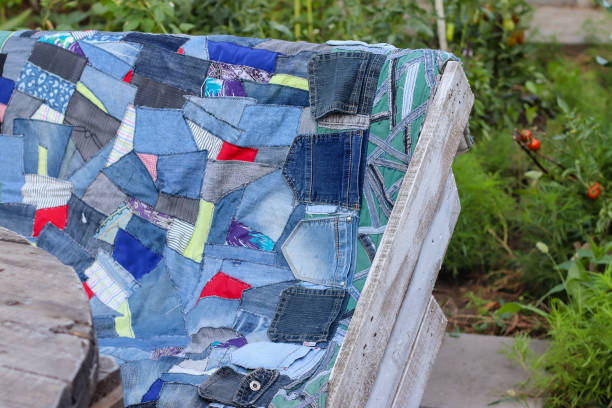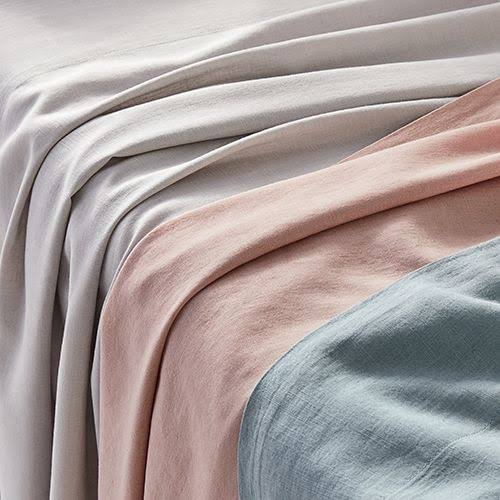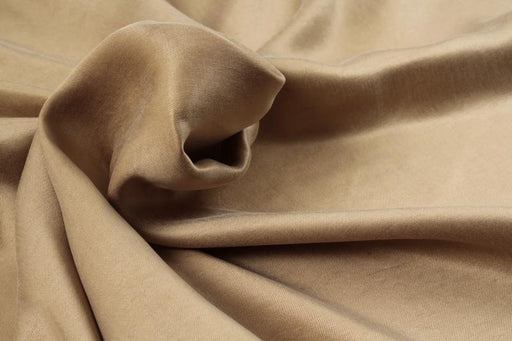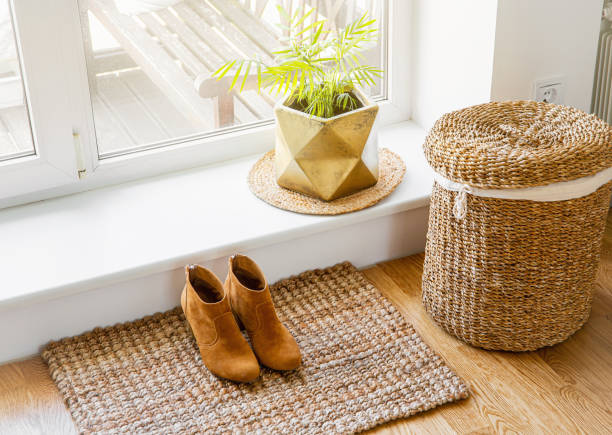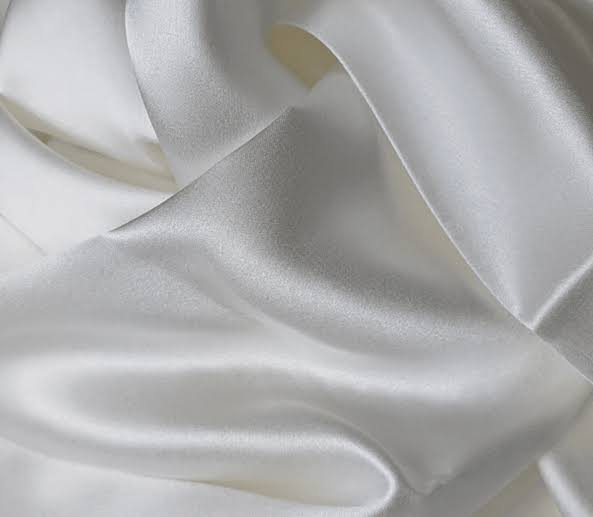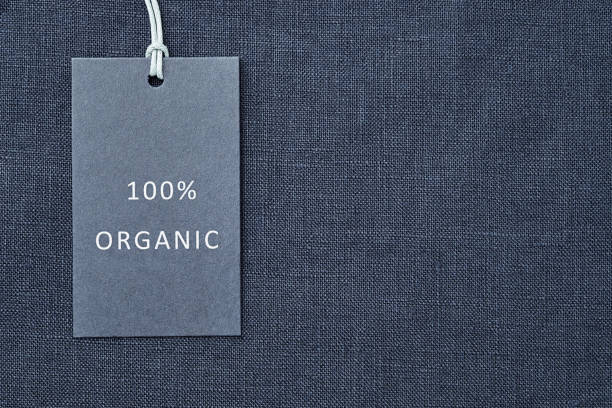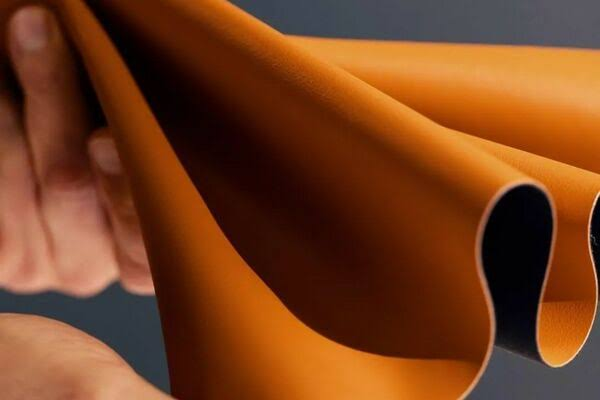Did you know that the fashion industry is responsible for a significant portion of global pollution, accounting for approximately 10% of all carbon emissions?
Conventional fabrics, with their heavy reliance on harmful chemicals and wasteful practices, have led to detrimental consequences for our planet. That’s why the need for eco-friendly fabrics for sustainable fashion is more pressing than ever.
Sustainable, ethical, and environmentally conscious fabrics offer a path towards a more responsible and stylish future.
If you’re passionate about fashion and the well-being of our planet, this blog post is for you. We’re about to explore a vibrant tapestry of materials that will not only make you look good but also make you feel good about your fashion choices.
Let’s dive right in as we unveil 21 environmentally friendly fabrics that are at the forefront of sustainable fashion.
What are Eco-friendly Fabrics?
Eco-friendly fabrics are textile materials that are consciously designed and produced to minimize their environmental impact. These fabrics are at the forefront of a sustainable and environmentally responsible fashion revolution. They prioritize the well-being of our planet, from the sourcing of raw materials to the manufacturing process and, eventually, to their disposal.
The Importance of Sustainable Fashion
Sustainable fashion is not just a trend; it’s a necessity for our planet’s well-being. The fashion industry is notorious for its environmental impact, often due to the extensive use of synthetic fabrics like acrylic fabric and polyester. These materials can release harmful microplastics during washing, further contributing to the pollution crisis.
Sustainable fashion places a strong emphasis on sustainable materials and manufacturing processes. It takes into account the entire lifecycle of a fabric, from the sourcing of materials to the manufacturing process and the disposal of waste fabric. It promotes the use of sustainable fabrics and recycled materials, steering away from unsustainable fabrics like conventional cotton and virgin polyester.
When you choose environmentally friendly fabrics, you actively participate in a more conscious and sustainable living, making choices that reduce harm to the environment and support the well-being of our planet.
Why Sustainable Fabrics Matter
The significance of sustainable fabrics in today’s world cannot be overstated. As we face the pressing challenges of climate change, resource depletion, and environmental degradation, our choices in fashion and textiles play a pivotal role in addressing these issues.
The following are reasons why sustainable fabrics matter in the world today:
Reducing Environmental Impact
Sustainable fabrics are produced with a focus on minimizing harm to the environment. They utilize natural fibers or recycled materials, which have a significantly lower environmental footprint compared to synthetic fabrics. This means reduced consumption of energy, water, and other valuable resources in the production process.
Mitigating Harmful Chemicals
Many conventional fabrics involve the use of toxic chemicals, from synthetic fertilizers in cotton farming to harsh dyes and finishes in textile processing. Sustainable fabrics, on the other hand, often adhere to stringent standards like the Global Organic Textile Standard (GOTS), ensuring that they are free from harmful substances. This not only protects the well-being of workers but also prevents the release of toxic chemicals into the environment.
Promoting Sustainable Agriculture
Natural fabrics like organic cotton and hemp support sustainable agricultural practices. Organic cotton farming, for instance, encourages soil health and reduces water consumption, making it a more sustainable alternative. Hemp requires minimal water and grows quickly, helping to conserve vital resources.
Lessening Microplastic Pollution
Synthetic fabrics like polyester release microplastics into the environment during washing. For sustainable fabric that is made from natural fiber or recycled fabric, it does not shed harmful microplastics.
Supporting Ethical Practices
Sustainable fabrics often come from sources committed to ethical and fair labor practices. Workers involved in the production of these materials are treated fairly and are provided with safe working conditions.
Encouraging Sustainable Fashion
The fashion industry is notorious for its fast-paced and wasteful practices. Sustainable fabrics promote sustainable fashion by extending the lifespan of clothing items and reducing the disposal of clothing waste. This leads to a reduction in post-consumer waste and encourages more responsible consumer behavior.
Empowering Consumer Choices
By choosing sustainable fabrics, consumers have the power to influence the fashion industry towards more sustainable practices. Their choices send a message to fashion brands and manufacturers that there is a growing demand for environmentally responsible products.
Eco-friendly/Sustainable Fabrics
Now, let’s delve into sustainable fabrics that are impactful to the environment. By choosing the following sustainable clothing materials, you contribute to a more sustainable and responsible fashion industry.
Organic Cotton
Organic cotton is one of the most sustainable fabrics in the world of sustainable textiles. It plays a vital role in the growing movement towards more responsible and environmentally conscious fashion.
Unlike conventional cotton, it is cultivated without the use of synthetic fertilizers and harmful chemicals, a practice that significantly reduces the environmental impact of cotton production. This aligns with the broader goal of promoting sustainable materials in the fashion industry.
One of the standout advantages of this sustainable fabric is its contribution to the well-being of workers and communities involved in cotton farming. It also offers a lot of benefits to consumers. It provides a natural fiber that is breathable, comfortable, and suitable for a wide range of clothing items.
Organic cotton garments are also less likely to cause skin irritations because they are free from the toxic chemicals that can be present in conventional cotton clothing.
Recycled Polyester
Recycled polyester is a sustainable alternative to virgin polyester, a synthetic fabric with a considerable environmental impact. Conventional polyester production relies heavily on industrial plastic and energy-intensive manufacturing processes, resulting in high carbon dioxide emissions. In contrast, recycled polyester breathes new life into waste products, making it a sustainable option.
The process of producing recycled polyester involves transforming post-consumer waste, such as plastic bottles and waste fabric, into a durable fabric with fewer carbon emissions. This is one of the most sustainable fabrics that not only reduces the reliance on raw materials but also diverts harmful plastics from landfills and oceans, making it a significant contributor to sustainable practices.
Recycled polyester’s impact on the environment is not limited to its production alone. This sustainable fabric is also an advocate for conscious consumer choices. When you wear a t-shirt or clothing item made from recycled fabrics like polyester, you participate in reducing the demand for unsustainable fabrics and endorse a more sustainable clothing culture.
What sets recycled polyester apart from conventional polyester is its closed-loop system, which emphasizes the importance of sustainability. In this system, the fabric can be recycled repeatedly, further reducing the need for new materials and minimizing waste.
Recycled Cotton Fabric
Recycled cotton stands out in the sustainable fabrics list as a viable alternative to conventional cotton, known for its resource-intensive production. Unlike conventional cotton, which relies on synthetic fertilizers and often involves harmful chemicals, recycled cotton repurposes post-consumer waste fabric.
This process significantly reduces the need for these toxic substances and minimizes the environmental impact associated with common fabrics.
The process of manufacturing recycled cotton involves taking discarded clothing, fabric scraps, and other waste products and breaking them down into raw materials. These raw materials are then transformed into new clothing items, reducing the need for virgin cotton production. It’s a sustainable material that aligns with eco-friendly practices and emphasizes the importance of waste reduction.
When a cotton fabric is recycled, it helps to maintain the integrity of the soil, making it a more sustainable option.
The benefits of recycled cotton extend beyond its environmental impact. As a sustainable clothing material, it embodies the ethos of a circular fashion industry, where items are designed with longevity and reusability in mind. This approach reduces waste fabric and promotes the use of sustainable clothing, ensuring that resources are used efficiently.
Organic Hemp fabric
Hemp fabric stands as one of the most sustainable fabrics available today. Organic hemp fabric is a textile made from the fibers of the hemp plant (Cannabis sativa).
Organic hemp is known for its durability. It is long-lasting, making it an ideal material for clothing and textiles that stand the test of time. This durability promotes a sustainable lifestyle where items need to be replaced less frequently.
Unlike synthetic materials like acrylic or polyester, organic hemp is completely biodegradable. When a hemp garment reaches the end of its life, it can naturally decompose, reducing the burden on landfills and our environment.
Hemp is not limited to clothing alone. Its fibers can be used for textiles, ropes, paper, and even construction materials. This versatility further underscores its significance as a sustainable material.
Pinatex
Pinatex is a plant-based textile made from the fibers of pineapple leaves. These leaves are a byproduct of the pineapple industry. As a byproduct of the pineapple harvest, Pinatex embraces the principles of sustainability.
Pinatex production ensures that the fabric remains free from toxic chemicals and synthetic substances. It is a vegan alternative to leather, making it an ethical choice for those who are committed to cruelty-free fashion. It offers the look and feel of traditional leather without the associated harm to animals.
Pinatex is an eco friendly fabric that can be used for various applications, from clothing to accessories and even upholstery. Its versatility promotes a longer lifespan for the products it’s used in, reducing the need for replacements.
In comparison to conventional leather, which is often produced with harmful tanning processes and has a substantial environmental impact, Pinatex is a more sustainable alternative. It minimizes the harm caused by the leather industry.
Camel Wool
Camel wool is a natural fibre derived from the soft undercoat of camels. This natural origin sets it apart from synthetic fabrics, which are often produced from industrial plastics and contribute to a host of environmental problems.
Camel wool, on the other hand, is harvested through a process that respects the animals and ensures a renewable source of raw material.
Camels, well-known for their ability to thrive in harsh desert environments, produce wool that is uniquely suited for a range of climates. Their wool offers exceptional insulation, keeping you warm in the cold and cool in the heat. This adaptability reduces the need for multiple clothing changes throughout the year, a common practice that contributes to textile waste and pollution.
A key aspect of sustainable fashion is the durability of materials. Camel wool is renowned for its longevity and resistance to wear and tear. This durability means that camel wool garments are likely to last for years, reducing the need for frequent replacements and the associated waste generated by the fashion industry.
When compared to less sustainable fabrics like virgin polyester, which is a major contributor to microplastic pollution in the oceans, camel wool is a more eco-friendly alternative. Its low carbon footprint and natural attributes make it an ideal choice for those seeking to embrace sustainable living through their clothing choices.
Camel wool production has a significantly lower environmental impact compared to synthetic fabrics like acrylic, which are derived from plastic.
Cork Fabric
Cork fabric, also known as cork leather or cork cloth, is a unique and sustainable material made from the bark of cork oak trees. It offers a wide range of benefits that make it an eco-friendly alternative to traditional fabrics and synthetic materials.
Cork material is harvested from the bark of cork oak trees, primarily found in the Mediterranean region. These trees can live for over two centuries and have their bark harvested every 9-12 years without causing harm. This makes cork a renewable and sustainable resource. Additionally, cork products can be recycled and repurposed, reducing waste.
Cork oak trees absorb carbon dioxide during their growth, making cork production a carbon-neutral process. The harvested trees continue to sequester carbon, reducing greenhouse gas emissions.
Econyl (Recycled Nylon)
Econyl is a regenerated nylon fabric created by recycling and repurposing waste materials, particularly discarded nylon textiles and industrial plastic waste. This recycled nylon is made by collecting and recovering nylon waste, such as discarded fishing nets, fabric scraps, and regenerating it into high-quality nylon yarn. This process diverts these materials from landfills and the ocean, reducing the environmental impact of waste.
Econyl maintains the same quality, strength, and durability as traditional nylon. It can be used in a wide range of products, from swimwear and activewear to fashion accessories and interior design, making it a versatile and sustainable choice for various industries.
Modal
Modal fabric is also one of the most sustainable fabrics in the fashion industry. It’s a sustainable fabric made from wood pulp, usually sourced from beech trees.
The production of modal involves less use of chemicals and energy compared to traditional rayon manufacturing. The closed-loop process, in which up to 95% of the chemicals are recycled, reduces the environmental impact.
Modal is biodegradable, meaning that when it eventually reaches the end of its useful life, it naturally decomposes without causing long-lasting harm to the environment.
This sustainable fabric is known for its exceptionally soft and breathable qualities, making it a comfortable choice for clothing and textiles. The comfort factor encourages its use in fashion, ensuring its sustainability by reducing the need for frequent replacements.
The production of modal often leads to less waste and a higher yield compared to some other textiles, contributing to the efficiency of resource utilization.
Tencel Lyocell
Tencel Lyocell is a type of rayon fabric known for its softness, strength, and eco-friendly attributes.
Lyocell is primarily made from wood pulp sourced from renewable trees, such as eucalyptus. These trees grow quickly and do not require extensive irrigation or synthetic pesticides, making them a sustainable resource.
The manufacturing process for lyocell is designed to be environmentally friendly. It operates in a closed-loop system, where up to 99% of the chemicals and solvents used are recycled and reused, minimizing waste and reducing environmental impact.
Lyocell products often meet various sustainability certifications, such as OEKO-TEX Standard 100 and FSC (Forest Stewardship Council), which ensure responsible sourcing and manufacturing practices.
Lyocell can be used in a wide range of applications, from clothing and bedding to home textiles and more, making it a versatile and sustainable choice for various industries.
Upcycled Fabrics
Upcycled fabrics are created by repurposing existing materials or garments that would otherwise end up as waste in landfills. This process diverts these materials from becoming environmental pollutants, helping to reduce textile waste.
By using pre-existing materials, upcycling conserves the resources that would be required to produce new fabrics from scratch. This includes saving water, energy, and raw materials, which are otherwise heavily consumed in textile production.
The energy required to upcycle materials is generally lower than that needed for manufacturing new fabrics. This results in a reduced carbon footprint and decreased reliance on fossil fuels.
Upcycling encourages creativity and the production of unique, one-of-a-kind items. This individuality reduces mass production and the associated environmental impacts.
Upcycled fabrics can give new life to products that may have otherwise been discarded. By extending the lifespan of clothing and textiles, upcycling reduces the need for frequent replacements and the waste generated by disposable fashion.
Alpaca Wool
Alpaca wool, often simply referred to as alpaca fiber, is a natural material obtained from the fleece of alpacas, a domesticated species of South American camelid.
Alpacas, the source of alpaca wool, have a relatively low environmental impact compared to some other livestock. They are gentle on pastures and have soft hooves that don’t damage the land. Alpacas are often raised in a sustainable and eco-friendly manner.
Alpaca fiber is naturally hypoallergenic, making it a suitable option for individuals with sensitivities to lanolin, which is found in sheep’s wool and is a common source of wool-related allergies.
Bamboo Linen
Bamboo linen, also known as bamboo fabric, is a textile made from the pulp of bamboo plants. Bamboo is one of the fastest-growing plants on Earth, making it a highly renewable resource. It can grow up to several feet in a single day.
Bamboo fibers have natural antibacterial properties, which can reduce the need for chemical treatments in fabric production.
Bamboo fabric is often hypoallergenic and gentle on the skin, making it a suitable choice for those with sensitivities. It is also breathable and moisture-wicking, providing comfort in various weather conditions.
Bamboo fabric can be used for various applications, from clothing and bed linens to towels and accessories.
Bananatex
Bananatex fabric is an innovative and sustainable textile made from banana plants. It is primarily produced using the fibers from the pseudostems of banana plants. These plants grow quickly and are abundant in many regions, making them a readily available and sustainable material.
The production of Bananatex involves a low environmental impact. It doesn’t require extensive water, synthetic pesticides, or harmful chemicals for cultivation and processing, reducing its ecological footprint.
Bananatex utilizes parts of the banana plant that are typically considered waste in banana farming. This repurposing of agricultural by-products minimizes waste and maximizes resource efficiency.
Bananatex is biodegradable, meaning it naturally decomposes without causing long-lasting harm to the environment. When discarded, it won’t contribute to pollution or waste problems.
Ecovero
Ecovero is a type of viscose or rayon fabric, which is made from sustainably sourced wood pulp, usually from renewable forests. This sustainable material undergoes an environmentally responsible production process, meeting stringent ecological and social criteria.
Ecovero fabric is often used to create various types of clothing, including dresses, tops, blouses, skirts, and trousers. Its soft and breathable qualities make it comfortable to wear. It can also be used to produce eco-friendly and comfortable t-shirts.
Organic Jute
Organic jute is a vegetable fiber derived from the jute plant (Corchorus olitorius and Corchorus capsularis). It is one of the most affordable natural fibers and is primarily grown in India and Bangladesh. Organic jute is cultivated using eco-friendly and sustainable farming practices, ensuring minimal harm to the environment.
Jute is a long-lasting material for fashion and it helps reduce the need for frequent replacements of fashion items. It is breathable and comfortable to wear in warm weather conditions.
Jute is a popular choice for eco-friendly tote bags, backpacks, and handbags. It can also be used for making sustainable and comfortable espadrilles, sandals, and other footwear.
Sustainable Silk
Sustainable silk refers to silk that is produced in a manner that minimizes environmental impact and upholds ethical standards. It aims to address the shortcomings of traditional silk production, which often involves the killing of silkworms and the use of harmful chemicals. Sustainable silk production focuses on cruelty-free practices and reducing the environmental footprint.
Unlike traditional silk, sustainable silk production does not involve the killing of silkworms. This cruelty-free approach is more ethical and aligns with modern sustainability standards.
Sustainable Silk is used to create a wide range of clothing items, including dresses, blouses, and shirts. It’s also used for making accessories like silk scarves, ties and pocket squares.
Qmonos
Qmonos is a synthetic silk material inspired by the natural silk produced by spiders. It is created through advanced biotechnology processes, primarily using yeast or bacteria to produce the silk proteins. These proteins are then harvested and spun into fibers to create Qmonos.
Qmonos is a sustainable fashion choice because it is biodegradable, meaning it naturally breaks down over time, reducing its environmental impact and waste.
Unlike traditional silk production, Qmonos does not involve any harm to animals. It’s a cruelty-free and ethical alternative.
Qmonos can be engineered to have specific properties, such as strength, elasticity, and softness, making it a versatile choice for various fashion applications.
The production of Qmonos can be more eco-friendly, with fewer chemicals and pesticides used compared to conventional silk farming.
Qmonos is being explored for use in technical textiles for its unique properties, such as strength and lightweight characteristics.
Organic Linen
Organic linen is composed of fibers derived from the flax plant, scientifically known as Linum usitatissimum. This natural fiber is harvested from the stem of the flax plant. The flax plant’s resilience makes organic linen a frontrunner in sustainable materials.
Organic linen retains the breathability and comfort of conventional linen, making it a desirable option for clothing. It can be used to create various fashion items, from dresses and shirts to trousers and accessories.
Organic linen’s sustainable attributes, along with its timeless and natural appeal, make it an attractive choice for those who appreciate eco-friendly fashion without compromising on style and comfort. Its biodegradability and lower environmental impact make it a breath of fresh air in the fashion industry.
Apple Leather
Apple leather, also known as “apple leatherette” or “apple skin,” is an innovative and sustainable alternative to traditional leather. It’s made from apple waste, such as apple peels and cores, which are often discarded during food production. These apple remnants are broken down into a pulp, which is then mixed with a binding agent and spread into thin sheets. The result is a material that closely mimics the texture and appearance of traditional leather.
Apple leather repurposes what would otherwise be food waste, reducing the environmental impact of discarding apple byproducts. It’s a cruelty-free and animal-friendly alternative to traditional leather, eliminating the need for animal farming and potential harm.
Sustainable shoe brands use apple leather for making eco-friendly shoes, including sneakers, sandals, and boots.
Apple leather is used to create stylish and sustainable handbags, wallets, belts, and other fashion accessories.
Sustainable Cashmere
Sustainable cashmere is a conscious approach to cashmere production that aims to address the environmental and ethical concerns associated with traditional cashmere. While traditional cashmere often raises sustainability issues, sustainable cashmere focuses on mitigating these challenges.
Sustainable cashmere producers prioritize the humane treatment of cashmere goats. This includes ensuring they have access to proper nutrition and living conditions and avoiding overbreeding and overmilking.
Some sustainable cashmere production methods aim to reduce the environmental impact by using responsible land management, minimizing chemical use, and focusing on resource efficiency.
Wrapping Up
Sustainability is not just a choice, it’s a necessity. If we want to impact our planet positively, and avoid pollution in any form, we need to embrace sustainable fabrics.
We’ve explored 21 eco-friendly fabrics that are sustainable. From classics like organic to recycled cotton and linen to innovative options such as Econyl and Bananatex, these materials embody the principles of responsible sourcing, minimal environmental impact, and conscious production.
Each fabric brings its unique attributes to the table, whether it’s the biodegradability of hemp, the softness of Tencel Lyocell, or the warmth of alpaca wool. The shared thread that ties these fabrics together is their commitment to reducing waste, conserving resources, and prioritizing ethical practices.
As we embrace the era of eco conscious fashion, it becomes clear that the choices we make as consumers and designers have a direct impact on our planet. By opting for these sustainable fabrics, we not only enhance our wardrobe but also contribute to a more sustainable and responsible fashion industry.
I hope you found this content helpful. If there’s any other sustainable fabric choice you’ll love to add to the list, you can share with us in the comment section.
You can also share your email with us to receive latest updates on our fashion, beauty and wellness blog posts.



